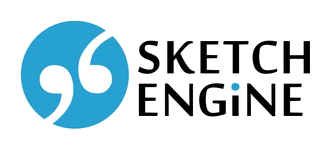Dutch Trends corpus: a daily-updated monitor corpus of news articles
The Dutch Trends corpus is a Dutch monitor corpus made up of news articles or other sources that are regularly updated from their RSS feeds (newsfeeds). The Dutch trends corpus is updated twice a week with new texts and grows by about 2 million words every week. These regular updates enable you to use the Trends diachronic analysis tools and study word usage changes, trending words, and neologisms in Dutch.
Corpus size
The Dutch Trends corpus has been regularly updated since 2023. As of May 2024, the Dutch trends contain more than 200 million words.
Dutch Trends corpus in statistics:
| Number of words: | 200+ million |
| Number of tokens: | 230+ million |
| Number of sentences: | 14+ million |
| Number of documents: | 600+ thousand |
Part-of-speech tagset
The Dutch corpus was POS annotated by TreeTagger using the following NLWAC POS tagset.
How is the Dutch Trends corpus updated?
New texts are downloaded every four hours. Every Tuesday and Friday, all texts downloaded until the previous day are added to the corpus. Duplicate and near-duplicate texts within the same month are removed, but they are kept in different months, e.g. if the same text appears in June twice, only one instance is kept. If the same text appears once in June and once in July, both are kept.
Search the Dutch Trends corpus
Sketch Engine offers a range of tools to work with this Dutch Trends corpus from news articles.
Tools to work with the Dutch Trends corpus
A complete set of tools is available to work with this Dutch Trends corpus from news to generate:
- word sketch – Dutch collocations categorized by grammatical relations
- thesaurus – synonyms and similar words for every word
- keywords – terminology extraction of one-word and multi-word units
- word lists – lists of Dutch nouns, verbs, adjectives, etc. organized by frequency
- n-grams – frequency list of multi-word units
- concordance – examples in context
- trends – diachronic analysis automatically identifies neologisms and changes in use
- text type analysis – statistics of metadata in the corpus
Bibliography
Trends – diachronic analysis
Adam Kilgarriff, Ondřej Herman, Jan Bušta, Pavel Rychlý and Miloš Jakubíček. DIACRAN: a framework for diachronic analysis. In Corpus Linguistics (CL2015), United Kingdom, July 2015.
Ondřej Herman and Vojtěch Kovář. Methods for Detection of Word Usage over Time. In Seventh Workshop on Recent Advances in Slavonic Natural Language Processing, RASLAN 2013. Brno: Tribun EU, 2013, pp. 79–85. ISBN 978-80-263-0520-0.
TenTen corpora
Jakubíček, M., Kilgarriff, A., Kovář, V., Rychlý, P., & Suchomel, V. (2013, July). The TenTen corpus family. In 7th International Corpus Linguistics Conference CL (pp. 125-127).
Suchomel, V., & Pomikálek, J. (2012). Efficient web crawling for large text corpora. In Proceedings of the seventh Web as Corpus Workshop (WAC7) (pp. 39-43).
Genre annotation and topic classification
SUCHOMEL, Vít. Genre Annotation of Web Corpora: Scheme and Issues. In Kohei Arai, Supriya Kapoor, Rahul Bhatia. Proceedings of the Future Technologies Conference (FTC) 2020, Volume 1. Vancouver, Canada: Springer Nature Switzerland AG, 2021. s. 738-754. ISBN 978-3-030-63127-7. doi:10.1007/978-3-030-63128-4_55.
Use Sketch Engine in minutes
Generate collocations, frequency lists, examples in contexts, n-grams or extract terms. Use our Quick Start Guide to learn it in minutes.





